G. L. Pease
 It’s late. Not really late, like witching hour late, or late enough to worry about vampires, but late enough that there’s a long day behind me. I’ve been trying to write for much of the day, but the shenanigans of my dogs and my kid, both separately and in some sort of conspiratorial concert, have prevailed in keeping me at a distance from anything even approaching a coherent sentence. Finally, I gave up, prepared and assembled a tray full of ingredients for a nice paella, and went outside to spend some enjoyable time cooking, perfuming the air with the wonderful aromas, drinking a nice Tempranillo, and trying to tune out the incessant yapping of my neighbor’s tinydog, the whine of a chainsaw being employed, apparently catastrophically, in some nearby “construction” project, and the unmuffled two-stroke flatulence of a local delinquent’s minibike as he rode up and down the hill, attempting to terrorize everyone on Second Street, all whilst struggling with the fact that my wine glass kept finding itself inexplicably empty.
It’s late. Not really late, like witching hour late, or late enough to worry about vampires, but late enough that there’s a long day behind me. I’ve been trying to write for much of the day, but the shenanigans of my dogs and my kid, both separately and in some sort of conspiratorial concert, have prevailed in keeping me at a distance from anything even approaching a coherent sentence. Finally, I gave up, prepared and assembled a tray full of ingredients for a nice paella, and went outside to spend some enjoyable time cooking, perfuming the air with the wonderful aromas, drinking a nice Tempranillo, and trying to tune out the incessant yapping of my neighbor’s tinydog, the whine of a chainsaw being employed, apparently catastrophically, in some nearby “construction” project, and the unmuffled two-stroke flatulence of a local delinquent’s minibike as he rode up and down the hill, attempting to terrorize everyone on Second Street, all whilst struggling with the fact that my wine glass kept finding itself inexplicably empty.
Some days are just like that. There’s enough to do that 36 hours would seem too few, but so little hope of getting anything accomplished in any moment that 24 seems too many. But, now it’s late. The kid’s asleep, I’ve threatened the dogs with straitjackets if they don’t settle down, and I’ve got a nice cup of tea to help soothe the battle fatigue. More to the point, I’ve got a nice pipe going, enjoying the solace that a favored briar and blend can bring as the abject chaos of the day dissolves in wisps of fragrant tobacco smoke.
I invite you to light up a bowl and join me as I dig into the mail bag for a few fun questions and answers.
Tim’s curiosity got the best of him, compelling him to ask: How important is heel thickness in a pipe? I look at those gorgeous Danish freehands and the sloping and paneled bowls of some American carvers and I think “geez, not much room there at the bottom”. I admit I am a traditionalist with my pipes and I prefer English/N.A. handmades in classic shapes. Perhaps I am too conservative to change my preference or experiment with a new aesthetic. I have never had a pipe burn out or crack so I don’t know why I fret about thin heels. Generally, I prefer the same thickness in a heel as the bowl, or at least ¼”. Am I just being a heel? P.S. I notice a lot of posters named Kevin – out of curiosity, is it just one Kevin who has a lot of questions or are there multiple Kevins?
A: Ever wear a pair of shoes with soles that are paper thin? Everything is fine until you step on that one sharp rock that drives needles of pain into your foot. For lounging about the penthouse or driving your Ferrari, they may be just the ticket, but for walking in the woods, maybe not so much, unless you’ve got elephant hide callouses. Bear with me; there’s actually more than a joke embedded in the analogy. Pipes can be like that. Most pipe makers feel that a 4-5mm thickness is necessary if the pipe is going to have any longevity, and my experience bears this out. I have a few pipes with very thin walls that smoke brilliantly, but I believe them to be exceptional cases, and whenever I smoke them, there’s always that back-of-the-mind worry that this time, if caution is cast to the winds, the pipe will spontaneously burst into flame. So, I’m careful with them, and so far, so good. In fact, it may be that extra care that makes them smoke as well as they do. We all know that smoking slowly, considerately, is one of the keys to getting a great smoke.
In the real world, things don’t always work that way. We smoke inattentively, puff a little more aggressively than we know we should, and find ourselves at the bottom of the bowl before the ink is dry in the cheque we wrote to pay for it. A little extra wood, at those times, is good insurance.
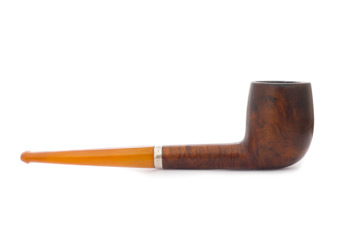 But, briar is remarkably resilient and flame-retardant stuff. If the pipe has a carefully cultivated cake, even a thin one, our pipes can endure significant abuse before complaining too loudly. For those of us who routinely smoke to the bottom, the heel cake is particularly important, as there is more heat generated towards the end of the smoke than at the beginning. So, yes, heel thickness is important, and a thin heeled pipe deserves a little extra attention during the crucial break-in bowls, but, in many cases, those thin heels are an illusion, especially if the bowl is tapered. If you measure the depth of the tobacco chamber and compare it with the bowl’s height, you might be surprised how much wood is really there. Pipe makers know how to make pipes that are durable and that will serve over the long term; it’s not in their best interest to make pipes cum flame-throwers, so if you’re buying from a well established maker, you can have confidence that the pipe probably won’t self-destruct, providing you don’t light it with a torch or otherwise abuse it.
But, briar is remarkably resilient and flame-retardant stuff. If the pipe has a carefully cultivated cake, even a thin one, our pipes can endure significant abuse before complaining too loudly. For those of us who routinely smoke to the bottom, the heel cake is particularly important, as there is more heat generated towards the end of the smoke than at the beginning. So, yes, heel thickness is important, and a thin heeled pipe deserves a little extra attention during the crucial break-in bowls, but, in many cases, those thin heels are an illusion, especially if the bowl is tapered. If you measure the depth of the tobacco chamber and compare it with the bowl’s height, you might be surprised how much wood is really there. Pipe makers know how to make pipes that are durable and that will serve over the long term; it’s not in their best interest to make pipes cum flame-throwers, so if you’re buying from a well established maker, you can have confidence that the pipe probably won’t self-destruct, providing you don’t light it with a torch or otherwise abuse it.
Pertaining to your post script, it’s actually a sort of conspiracy of Kevins, a cult of Kevins. They’re like the pods from Invasion of the Body Snatchers. Soon, the world will be dominated by legions of evil extraterrestrial Kevins. We’re destined for a Kevinverse, or probably more accurately, a Kevin apocalypse (who needs zombies?). We’re doomed. Might as well light a pipe, and enjoy the end. (Of course the one true Kevin is wringing his hands and cackling madly as he reads this, knowing, or at least hoping that the ultimate Kevin domination is indeed The Truth. And, in honor of your question, I decided not to answer those from any Kevins this month.)
From Adam: Over the course of the past year my friends and I have been purchasing a lot of used pipes on [that auction site]. Most of them have not been previously cleaned out. So we ream out the bowl and sand it to the wood. Almost every time we find cracks or burnout (severe char). Sometimes the cracks are very large and sometimes they are very small, like hairlines, spider-webbing the inside of the bowl. Our thoughts have been that this effects the smoking qualities and forever taints the pipe rendering it useless to smoke. We think this is because over time the heat from the coal will wear on those cracks burning into the bowl and further damaging the pipe. Furthermore, when you burn the wood it seals up the pores. Meaning the wood will not absorb the moisture and impurities in the tobacco while you smoke it which is what we believe is necessary in a good smoking pipe. I was curious to see what you think. Do you think that this is true? If the interior of the bowl is scorched do you think it is still okay to smoke and get the best from any given blend when broken in? The problem is that we are purists and want nothing less than the best from our pipes. Thank you for your time.
A: I think you may be going too far down a rabbit hole, but as something of a reality check, I discussed your concerns with George Dibos, pipe restoration guru and proprietor of Precision Smoking Pipe Rejuvenation and Repair. He’s worked on over a thousand estate pipes, so he’s got a statistically significant sample from which to draw sensible conclusions. His first comment was that, “you shouldn’t be taking it back to bare wood, because there’s no rewind button, and you never know what you’re going to find. If the pipe has a stable looking cake without splits or obvious damage, there’s no reason to go that far. You’re better off just reaming it and smoking it.” Once in a while, if it’s badly jugged or heavily crazed, you might have to go farther, but for the most part, just ream it carefully and it’ll be good to go.
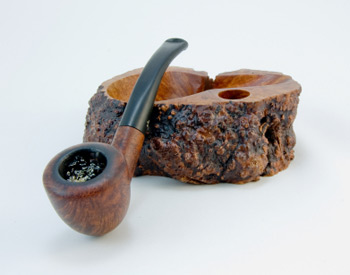 I agree with George. In all the years I’ve been working on and restoring old pipes myself, I’ve never felt any value in reaming back to wood, and risking further damage during the break-in period. Whether or not those spiderwebs are going to cause problems in the future is subject to speculation, but the chances are pretty good that they won’t, or the pipe would have shown greater damage already. On the other hand, if it’s burned out, it’s burned out. You might be able to patch a minor pit with some ash and honey or other similar technique, and it might work just fine, but it might not. How much are you invested in bringing every pipe back to smokable condition? I had a beautiful Comoy Sandblast Army Mount Dublin that I got in a trade that was showing signs of a burnout. I plastered it up and smoked it for years without any issues. In fact, it was a fantastic smoker, and I often wistfully regret having traded it.
I agree with George. In all the years I’ve been working on and restoring old pipes myself, I’ve never felt any value in reaming back to wood, and risking further damage during the break-in period. Whether or not those spiderwebs are going to cause problems in the future is subject to speculation, but the chances are pretty good that they won’t, or the pipe would have shown greater damage already. On the other hand, if it’s burned out, it’s burned out. You might be able to patch a minor pit with some ash and honey or other similar technique, and it might work just fine, but it might not. How much are you invested in bringing every pipe back to smokable condition? I had a beautiful Comoy Sandblast Army Mount Dublin that I got in a trade that was showing signs of a burnout. I plastered it up and smoked it for years without any issues. In fact, it was a fantastic smoker, and I often wistfully regret having traded it.
As to the second part of your question, there’s really no reason to think that these issues are going to be causative of diminished smoking characteristics. Again from George, “the tiny cracks will expose more surface area for fire to work on, but chances are good it won’t cause a problem. I’ve had plenty of pipes go through my hands that were badly charred, but smoked just fine.” The cake/wood interface is hardened char anyway, so I don’t see how it would interfere.
The bottom line is that there’s no reason not to smoke them. Some will be good, some won’t be. What’s the worst thing that can happen? If you toss all ones you think are bad, you’ve got 100% loss from that group, but if some of those, maybe even most of them end up being fine smokers, you’re ahead of the curve. At least give them a chance. And, here’s George’s tip for breaking them in again. “When building a cake in a new pipe, or an estate pipe that has been reamed to wood, you should not let it get too hot. The easiest way to do that without ‘pushing’ a pipe or disrupting your smoking rhythm with long pauses, is to fill two pipes with the same tobacco, and alternate smoking them. When the one in your hand gets warm, just set it down and pick up the other.”
Russ asks: Have you ever considered making a mild/medium VA flake, something that’s low in nicotine for those of us that like our VA flakes on the milder side?
A: That’s a great idea, Russ. I think I’ll put it in the Fog City Selection and call it Union Square. I bet it will become quite popular!
Finally, a couple similar questions, which I’ll answer together.
John writes: With the shortage of Samuel Gawith blends in the USA do you see American blenders developing comparable blends for this market? Are you focusing on this?
And, from Bob: I’d love to hear your opinions on British Lakeland blends, a favourite tobacco category of mine. Do they occasionally find their way into any pipe of yours? And will we encounter the funky the scent of old ladies’ perfume in any GL Pease tin any time soon? I felt you touched on the genre ever so slightly with your super-dooper Jackknife Plug – but any plans for a full entry? For what it’s worth, I know that an American take on a quintessential British style would intrigue more than a few people out there…
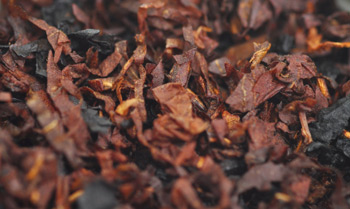 A: I admit, I’m not an ardent fan of Eu d’OldLady in my tobaccos, though there are some wonderful, more delicate scents being used by my friends at the traditional UK houses. But, the whole of the Lake District picture is something quite beyond drenching a bunch of baccy with Jean Naté and being done with it. Could we do it? Yes, but it’s not as easy as it may seem. To start with, the UK blenders source different leaf, some of which is sometimes referred to as “Empire tobacco.” These are similar strains to US tobaccos, but grown in much different soils, in different climates, using different agricultural practices, and this results in very different leaf. And, even if we were to get the same leaf, there are climactic and environmental differences between northern England and North Carolina that would express in the way the leaf ferments and ages, and there are different production methodologies, so those same sauces that work on the UK blends might not be so harmonious with our leaf in the US.
A: I admit, I’m not an ardent fan of Eu d’OldLady in my tobaccos, though there are some wonderful, more delicate scents being used by my friends at the traditional UK houses. But, the whole of the Lake District picture is something quite beyond drenching a bunch of baccy with Jean Naté and being done with it. Could we do it? Yes, but it’s not as easy as it may seem. To start with, the UK blenders source different leaf, some of which is sometimes referred to as “Empire tobacco.” These are similar strains to US tobaccos, but grown in much different soils, in different climates, using different agricultural practices, and this results in very different leaf. And, even if we were to get the same leaf, there are climactic and environmental differences between northern England and North Carolina that would express in the way the leaf ferments and ages, and there are different production methodologies, so those same sauces that work on the UK blends might not be so harmonious with our leaf in the US.
Yes, we could attempt to create something similar, and I’ve certainly explored a few experimental passes along those lines, but at what point is “close” close enough? Those who are chasing something specific won’t likely be satisfied with the approximations, and neither would I. One day, I might develop something that exhibits something of that Lakeland “style” in a way that works with our leaf, that makes me happy, but until that time, I’ll join you in hoping they get their production or distribution sorted so lovers of their tobaccos can enjoy them with more regularity, and less stress.
That’s it for this month. Keep the cards and letters coming, boys and girls. We love it when the mail bag is full.
-glp
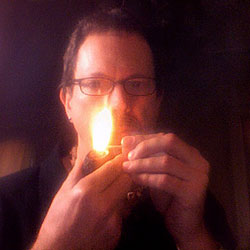 Since 1999, Gregory L. Pease has been the principal alchemist behind the blends of G.L. Pease Artisanal Tobaccos. He’s been a passionate pipeman since his university days, having cut his pipe teeth at the now extinct Drucquer & Sons Tobacconist in Berkeley, California. Greg is also author of The Briar & Leaf Chronicles, a photographer, recovering computer scientist, sometimes chef, and creator of The Epicure’s Asylum. See our interview with G. L. Pease here. |









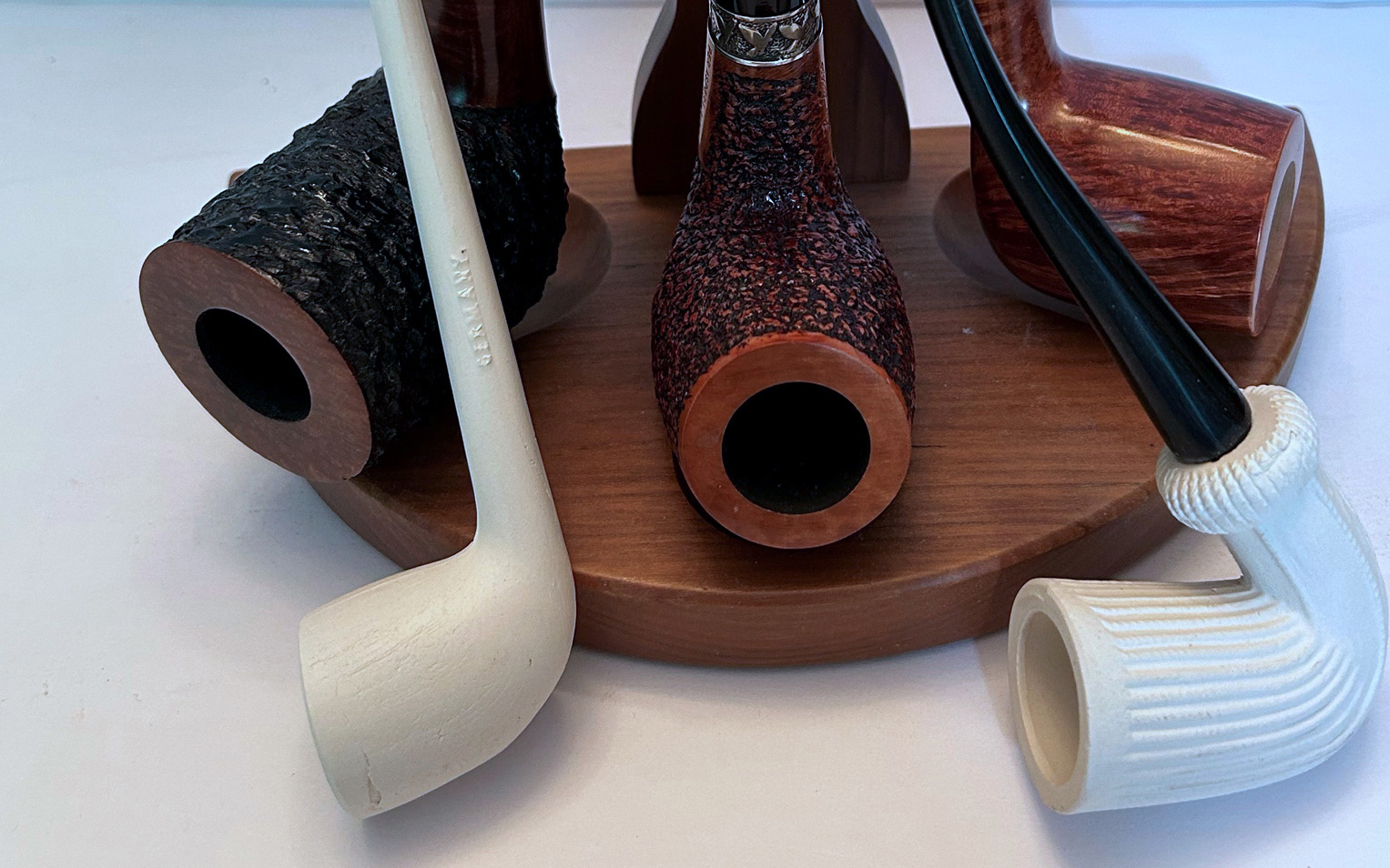










Great stuff as always. I learn something every time I read a new volume in this series.
Another great read, thanks Greg. I for one think you should leave the eau de toilette old lady smelling blends across the pond where they are loved. I would’t want your equipment to be contaminated and have the flavors get into your other blends.
Greg,
Great article as ever. I thought your paella looked superb – the issue of authenticity in paella is one for another time and forum, but I have heard every Spanish locality has its own view and one school of thought excludes shellfish focusing on chicken or rabbit only – personally I love the prawn, or even squid, contrast with chicken, especially chicken on the bone and retaining its skin, accompanied by Bandol rose.
By coincidence I was smoking your succulent Union Square while reading the article although I find it a solid medium strength, although admittedly I always find virginias stronger than most do and latakia forward mixtures weaker. My next pipe will be the lovely Laurel Heights from the same collection which I find lower in nicotine but delicious nonetheless – the lowest strength tobacco I have enjoyed in 20 years.
If anyone can make a decent Lakeland tobacco you can but I must confess to doubts about this genre both in terms of the flavouring and the tobacco used. Still I suppose as your collections cater to a very wide range of tastes maybe it can encompass even this style!
Hope your weather has cooled to comfortable (see article last month) – the weather here on the English North Sea coast has been really hot for us – high seventies with the occasional low eighties.
Ed (definitely not Kevin)
Paella on the BGE. Summer time cooking at it’s finest. Personally I wouldn’t spend two winks worrying about what’s authentic if you are happy with the results. It is true however the Spanish don’t blend proteins and the rice is NEVER covered. I swear I never drop the lid on the BGE so the rice absorbs some smoke flavor….honest….no really. 😉
If we are going to get all authentic it’s time to toss out the lump Charcoal and start looking for dried grape vines. So much for authenticity.
A good Sofrito and achieving Soccorat are the keys to great Paella irrespective of what protein you use. The standard here is Spanish Chorizo and Chicken thighs…unless I catch that darn wabbit in my herb garden again!
Thanks for the article.
My faves for paella are rabbit and snail, but I can’t get the family to eat it. The sofrito always enjoys long, slow cooking, and the bomba rice has its time to absorb all the stock’s goodness. And, this time the chouriço was Portuguese. I can do ‘traditional’ when it comes to paella, despite what some have said, but for me, it’s a place to start, a chord progression on which to riff. Hell, it’s not even really a Spanish dish, is it? It’s Moorish. It’s Arabic food, translated to the local ingredients. It’s cooked all over Spain, and every region has its take, right? So, why not a California version? Maybe I’ll do avocado and crab, next, with tobiko and seaweed, and a little wasabi to finish it. Shoyu, anyone? Daiginjo-shu to accompany?
.
Ed’s mention of Bandol rosé brings to mind Domaine Tempier’s brilliant rendition. Just the right spice, plenty of terroir, luscious fruit, and bracing dryness. If the budget were bigger, I’d have cases of it for my summer sipping.
.
Thanks for the fun comments, chaps. Glad you’re still enjoying the column. Invite your friends to join the party! There’s a little surprise coming later in the month…
.
-glp
Enjoyable read.
Many thanks!
Thanks for explaining why it is so difficult, if not impossible, to reproduce a regionally distinctive blend. The different ways in which climate and local biology effect curing, aging, and fermentation are factors a lay person seldom considers.
Highly enlightening, UberThanks!